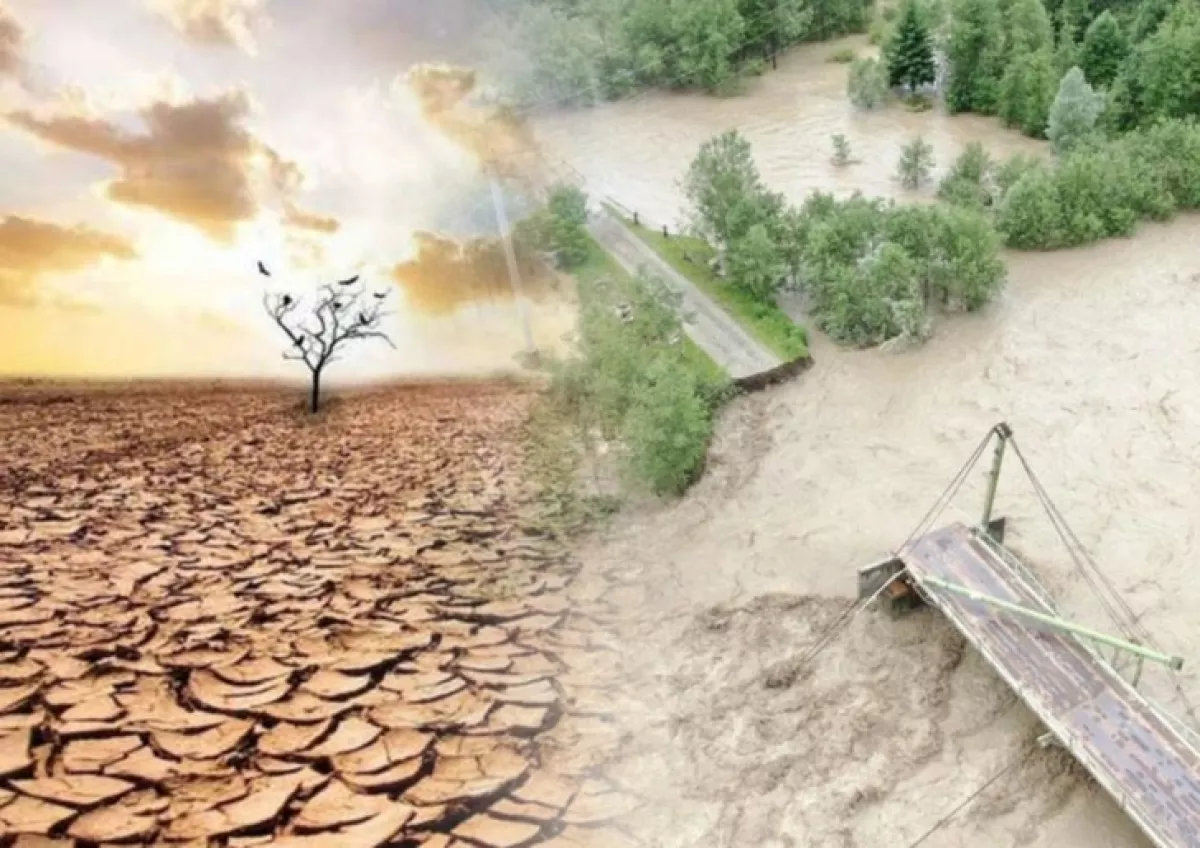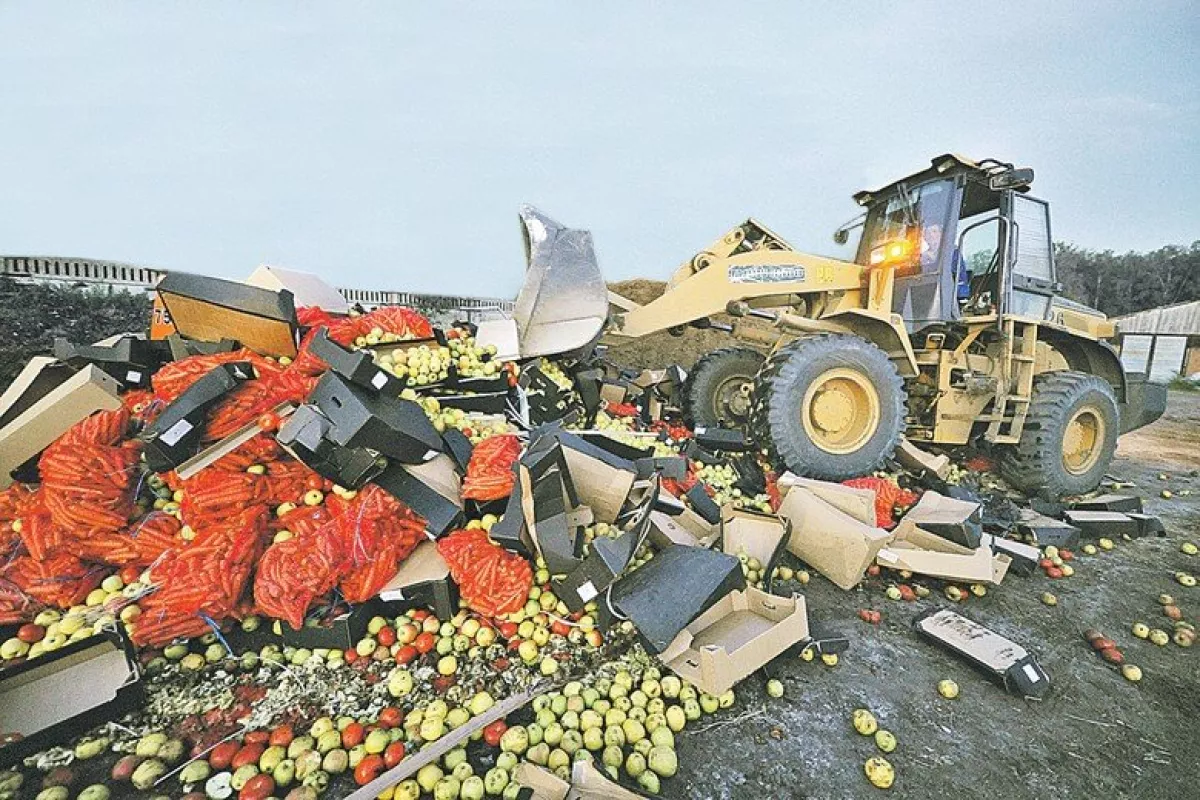A trillion wasted, millions starving Hunger marches across the globe
On May 16, the Global Report on Food Crises was released, prepared by the international network GNAFC, which includes the Food and Agriculture Organisation of the UN (FAO), the UN World Food Programme, and a number of other governmental and civil society organisations. The report shows that the global food security situation continued to deteriorate in 2024.
Today, more than 295 million people in 53 countries suffer from acute hunger. This is the highest number of hungry people ever recorded by the Global Network’s monitoring system. Among them are 37.7 million children under the age of 5, and 10.7 million pregnant or breastfeeding women.
But the most alarming fact is that the trend of increasing hunger has continued for the sixth consecutive year. The number of people suffering from acute malnutrition is growing by about 20% annually. In 2024, the number of hunger victims increased by 22.4%. Last year, nearly 14 million more people went hungry than in 2023.

If we look at a slightly longer time frame, the situation appears even more alarming. In 2016, 105.2 million people were critically undernourished, but over the past eight years, the number of hungry people worldwide has nearly tripled.
In 2023, the number of people facing catastrophic hunger and the threat of death from starvation (stage 5 according to the FAO classification) was four times higher than in 2016. In 2024, the figure for catastrophic hunger doubled, significantly exceeding forecasts. The country with the highest number of people suffering from hunger is Nigeria, with 31.8 million. Sudan and the Democratic Republic of the Congo come second, each with 25.6 million hungry people. Bangladesh ranks third with 23.6 million hunger victims. Following are Ethiopia, Yemen, Afghanistan, Myanmar, and Syria. In 2024, acute food crises emerged in Sudan, Palestine (Gaza Strip), Yemen, and Mali.
Traditionally, high levels of hunger are observed in Africa (up to 24–25% on average), Asia (29% of the population in five affected hunger-stricken countries), and Latin America (20% of hungry people in six countries).
But in 2024, similar threats were also recorded in Europe — in Ukraine and Moldova. In Ukraine, the acute food shortage is linked to the war, while in Moldova, the situation concerns refugees (1.2 million people).
Among other post-Soviet republics, Kyrgyzstan and Tajikistan appear in the Global Report for the first time, it seems. Fortunately, these Central Asian countries are not classified as hunger-affected nations but are considered at risk by UN experts due to economic difficulties, high food prices, and worsening adverse climate conditions.
Hunger, poverty, and war
What are the reasons for the rise in hunger in the 21st century? After all, technological development has reached unprecedented levels, capable of creating literal miracles. Yet, the number of hungry people on the planet has started to increase.

UN Secretary-General António Guterres called these figures “another unflinching indictment of a world dangerously off course.” Less emotional FAO experts list three main causes: armed conflicts, climate shocks, and economic crises.
The UN places armed conflicts at the top of the list, noting that acute food shortages affected 140 million people across 20 countries as a result. Extreme weather events, droughts, and floods caused food problems for 96 million people in 18 countries. Another 59.4 million people in 15 countries suffer from severe malnutrition linked to economic crises, including inflation and currency devaluation. The UN also includes the consequences of COVID-19 lockdowns in this category.
In most cases, these factors combine. However, in our view, the primary cause of hunger is poverty and the underdevelopment of the economies of post-colonial countries.
Undoubtedly, wars being waged around the world — by Russia and Ukraine, several other states, as well as numerous insurgent groups and terrorist organisations against their own governments — have a serious impact on food security both regionally and globally.
Armed conflicts devastate economies and social sectors, leading to massive forced displacement of civilian populations. The most severe consequences of military confrontations are seen on the African continent. However, even in Africa, conflict is not the only or always the main factor driving hunger. Nigeria ranks first in the total number of hungry people. The relative figures are also high there — up to 16% of the population suffers from acute malnutrition. The regions of Nigeria where illegal armed groups operate indeed have the highest numbers of people in need of food. This happens primarily against the backdrop of severe economic troubles affecting Nigeria. For example, inflation in July–August 2024 reached 39%. At the same time, the resources of this wealthy country are mostly exploited by foreign companies.
Therefore, it is precisely chronic poverty and underdeveloped agrarian and raw-material economies—dependent on foreign capital and ruthlessly exploited by it—that are the root causes of both hunger and armed conflicts. Not the other way around.

The same applies to the consequences of the coronavirus pandemic, droughts, and floods. Countries with highly productive economies are less vulnerable to weather fluctuations and can easily compensate for them. In contrast, for poor agrarian nations, climate change is akin to death—in the literal sense of the word. The same UN report acknowledges that hunger today often leads to the death of many people.
“To turn words into action…”
The flaws of the current neoliberal capitalist model are practically acknowledged by the UN Secretary-General himself.
“Hunger and malnutrition are spreading faster than our ability to respond, yet globally, a third of all food produced is lost or wasted,” António Guterres said.
According to the UN, the value of destroyed food amounts to about one trillion dollars, and up to 38% of the world’s total energy consumption goes into food production. But the problem is not only poor storage or strict regulations.

A significant portion of perfectly edible food is deliberately destroyed to avoid driving prices down and to protect the interests of large corporations.
The UN Secretary-General also noted that the current crisis is worsened by the reduction in funding for humanitarian aid to those suffering from hunger. Echoing this, Axel van Trotsenburg, Senior Managing Director of the World Bank, said at the report’s presentation: “we are losing ground on the most basic human need. At a time when needs are soaring, financing for food and nutrition crises is collapsing. Humanitarian and development funding is declining—squeezed by tight budgets, rising debt, and competing priorities.”
At the same time, the top global banker approaches the issue purely commercially. According to his calculations, every dollar spent on food yields 23 dollars in profit. But the problem is that millions of hungry people worldwide simply have no money or paid work to access such funds.
As for cuts in food aid programmes — this is also no accident or technical glitch. Nor is it due to a sudden “moral deficit.” The current global economic system is undergoing a profound crisis. Western powers are engaging in an unprecedented struggle for resources and markets, the likes of which have not been seen since World War II.
The vaguely mentioned “competing priorities” referred to by the World Bank’s Senior Managing Director primarily mean increased military budgets. Naturally, funds for preparing for war come at the expense of cuts to social spending and humanitarian programmes.
While many speakers at the Global Hunger Report presentation resorted to calls for new “consolidation,” “reset,” and other lofty slogans, Qu Dongyu, the Director-General of the UN Food and Agriculture Organisation (FAO), was more concrete.
A former Vice President of the Chinese Academy of Agricultural Sciences and Deputy Minister of Agriculture of China, he pointed out that most of the hungry live in agrarian countries. He urged that instead of sitting in offices and making plans disconnected from the realities on the ground, investments and aid should be directed toward developing agriculture in countries in distress. His estimates were more modest but, it seems, more realistic: one dollar invested in agricultural production can yield seven dollars in profit.

According to Qu Dongyu, only the development of the economies and autonomy of these countries can truly solve the problem of hunger, freeing them from the “addiction” of dependency.
Qu Dongyu urged: “To turn words into action!”
But can the international community, torn apart by escalating conflicts and contradictions, come together? Will it be possible to reduce the problem of hunger in the near future? And can the UN, in its current state, play a significant role in this? Unfortunately, recent trends in the global situation offer little reason for optimism…








